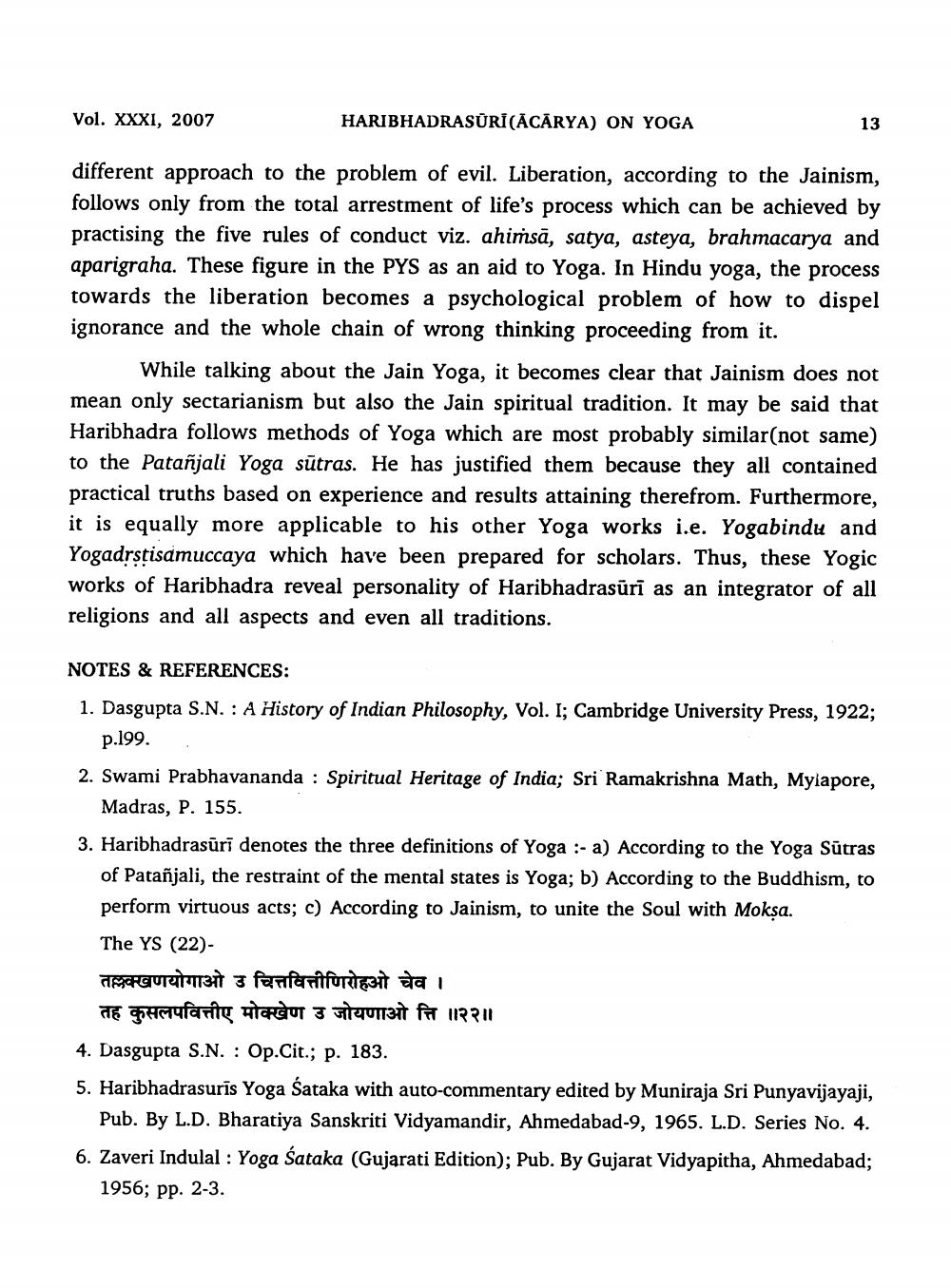________________
Vol. XXXI, 2007
HARIBHADRASŪRI(ĀCĀRYA) ON YOGA
13
different approach to the problem of evil. Liberation, according to the Jainism, follows only from the total arrestment of life's process which can be achieved by practising the five rules of conduct viz. ahiṁsā, satya, asteya, brahmacarya and aparigraha. These figure in the PYS as an aid to Yoga. In Hindu yoga, the process towards the liberation becomes a psychological problem of how to dispel ignorance and the whole chain of wrong thinking proceeding from it.
While talking about the Jain Yoga, it becomes clear that Jainism does not mean only sectarianism but also the Jain spiritual tradition. It may be said that Haribhadra follows methods of Yoga which are most probably similar(not same) to the Patañjali Yoga sūtras. He has justified them because they all contained practical truths based on experience and results attaining therefrom. Furthermore, it is equally more applicable to his other Yoga works i.e. Yogabindu and Yogadrstisamuccaya which have been prepared for scholars. Thus, these Yogic works of Haribhadra reveal personality of Haribhadrasūrī as an integrator of all religions and all aspects and even all traditions.
NOTES & REFERENCES:
1. Dasgupta S.N.: A History of Indian Philosophy, Vol. 1; Cambridge University Press, 1922;
p.199. 2. Swami Prabhavananda : Spiritual Heritage of India; Sri Ramakrishna Math, Mylapore,
Madras, P. 155. 3. Haribhadrasūri denotes the three definitions of Yoga :- a) According to the Yoga Sūtras
of Patañjali, the restraint of the mental states is Yoga; b) According to the Buddhism, to perform virtuous acts; c) According to Jainism, to unite the Soul with Moksa. The YS (22)तल्लक्खणयोगाओ उ चित्तवित्तीणिरोहओ चेव ।
तह कुसलपवित्तीए मोक्खेण उ जोयणाओ त्ति ॥२२॥ 4. Dasgupta S.N. : Op.cit.; p. 183. 5. Haribhadrasurīs Yoga Sataka with auto-commentary edited by Muniraja Sri Punyavijayaji,
Pub. By L.D. Bharatiya Sanskriti Vidyamandir, Ahmedabad-9, 1965. L.D. Series No. 4. 6. Zaveri Indulal : Yoga Sataka (Gujarati Edition); Pub. By Gujarat Vidyapitha, Ahmedabad;
1956; pp. 2-3.




